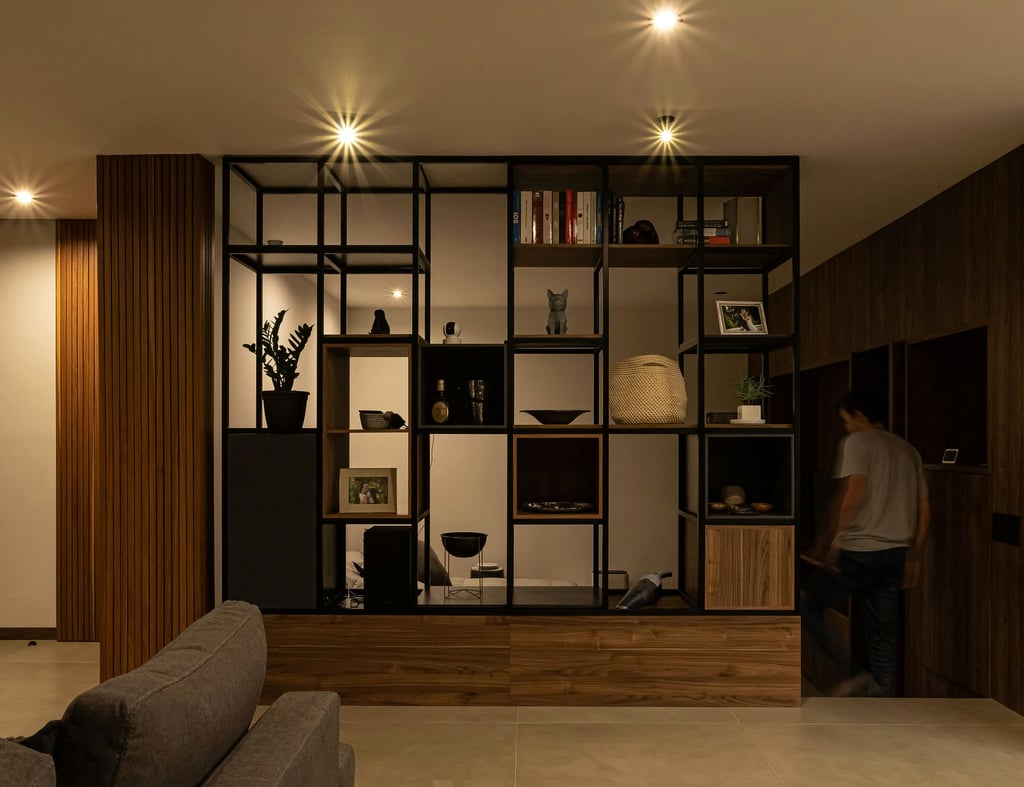Open-Concept Living: Discover the Benefits of Combining Style, Functionality, and Comfort at Home
Have you ever walked into a home where the kitchen and living room seemed to blend seamlessly together, without walls getting in the way? That’s the charm of open-concept living — a growing trend in modern homes that brings together beauty, practicality, and connection. In this post, you’ll discover why integrating spaces in your home can be a smart move — especially if you’re looking for practicality, spaciousness, and a more connected lifestyle. ________________________________________
6/4/20252 min read


What Is an Open-Concept Layout?
Definition and Context
Open-concept living refers to a design approach where walls and barriers between spaces are removed, creating a visual flow and sense of unity throughout the home. While it became popular with the rise of smaller urban apartments, it's now used in all types of homes thanks to its functional and aesthetic appeal.
Common Types of Integration
Some of the most popular combinations include:
Kitchen + Living Room: perfect for those who love to cook and socialize.
Living Room + Dining Area: creates a smooth and inviting space for gatherings.
Bedroom + Home Office: a practical solution in the era of remote work.
But of course, there are no strict rules — you can integrate whichever spaces best suit your lifestyle.
Functional Advantages of Open-Concept Spaces
Maximized Use of Space
Removing unnecessary walls means more usable square footage. This is especially helpful in small homes and apartments, where every inch counts. Open layouts help rooms feel larger and more flexible.
Increased Natural Light
Fewer barriers mean that natural light travels freely, creating brighter, more pleasant interiors. This can even help cut down on the need for artificial lighting during the day.
Easier Movement and Flow
With fewer walls, it’s easier to move through your home effortlessly. This is great for families with kids, seniors, or anyone who values open, breathable spaces.
Aesthetic and Emotional Benefits
Modern, Clean Look
Integrated spaces offer a light, modern, and cohesive design. When all the elements work together visually, the result is a home that feels both stylish and harmonious.
Better Interaction and Connection
One of the biggest benefits of open-concept living is enhanced social interaction. Whether you're cooking while chatting with someone on the couch or entertaining friends, everyone stays connected in the same shared space.
Customization and Flexibility
Open layouts are highly adaptable. Furniture can serve multiple purposes — like a kitchen island that doubles as a dining table or workspace. It’s easy to update or reconfigure the space as your needs evolve.
Challenges and How to Solve Them
Lack of Privacy
No walls can sometimes mean less privacy. To create visual separation without closing things off, consider room dividers, open shelving units, or sliding panels.
Staying Organized Is Key
Since all areas are visible, keeping the space tidy becomes even more important. Smart storage solutions and multifunctional furniture are essential to maintain order and visual balance.
Acoustics and Cooking Smells
With kitchens and living rooms combined, noise and smells can travel. Invest in a quality range hood and proper ventilation, and use rugs, curtains, and acoustic panels to reduce echo and absorb sound.
Tips for Successful Open-Concept Design
Use Rugs and Lighting to Define Zones
Area rugs help visually separate different zones, such as dining and living areas. Strategic lighting — like pendant lamps over the dining table and recessed lights in the kitchen — can further highlight each area’s purpose.
Stick to a Unified Color Palette and Materials
A consistent color scheme and complementary materials help tie everything together. This doesn’t mean every room should look the same, but they should feel like part of a whole.
Choose Versatile and Well-Planned Furniture
Opt for pieces that serve multiple roles, like storage ottomans, foldable tables, or sofas with built-in compartments. Smart furniture choices are key to functional and flexible open spaces.
Conclusion
Open-concept spaces go far beyond being just a design trend. They’re a modern solution to everyday living, offering more connection, light, and fluidity in the home. With good planning and thoughtful choices, you can create a space that is not only functional and beautiful, but also truly feels like home.
📣 Ready to Make Your Home More Open and Functional?
If this inspired you, share the post with a friend who’s thinking of remodeling!
© 2025 Dhomehub. All rights reserved.
